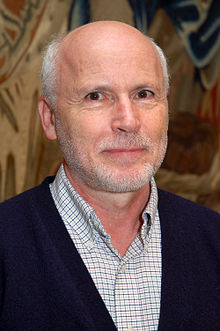
Benoit B. Mandelbrot was a Polish-born French-American mathematician and polymath with broad interests in the practical sciences, especially regarding what he labeled as "the art of roughness" of physical phenomena and "the uncontrolled element in life". He referred to himself as a "fractalist" and is recognized for his contribution to the field of fractal geometry, which included coining the word "fractal", as well as developing a theory of "roughness and self-similarity" in nature.
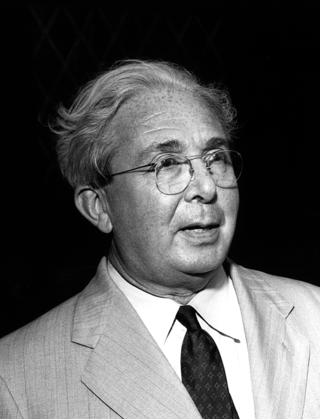
Leo Szilard was a Hungarian-born physicist, biologist and inventor who made numerous important discoveries in nuclear physics and the biological sciences. He conceived the nuclear chain reaction in 1933, and patented the idea in 1936. In late 1939 he wrote the letter for Albert Einstein's signature that resulted in the Manhattan Project that built the atomic bomb, and then in 1944 wrote the Szilard petition asking President Truman to demonstrate the bomb without dropping it on civilians. According to György Marx, he was one of the Hungarian scientists known as The Martians.

A fractal landscape or fractal surface is generated using a stochastic algorithm designed to produce fractal behavior that mimics the appearance of natural terrain. In other words, the surface resulting from the procedure is not a deterministic, but rather a random surface that exhibits fractal behavior.

Ernő Rubik is a Hungarian inventor, widely known for creating the Rubik's Cube (1974), Rubik's Magic, and Rubik's Snake.
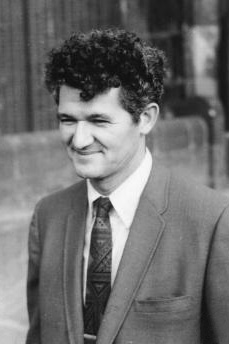
Peter David Lax is a Hungarian-born American mathematician and Abel Prize laureate working in the areas of pure and applied mathematics.
"The Martians" were a group of prominent scientists of Hungarian Jewish descent who emigrated from Europe to the United States in the early half of the 20th century.
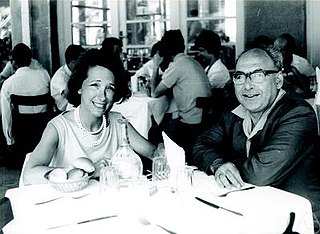
Alfréd Rényi was a Hungarian mathematician known for his work in probability theory, though he also made contributions in combinatorics, graph theory, and number theory.
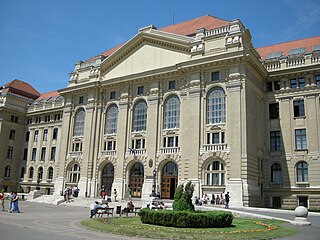
The University of Debrecen is a university located in Debrecen, Hungary. It is the oldest continuously operating institution of higher education in Hungary ever since its establishment in 1538. The university has a well established programme in the English language for international students, particularly in the Medical and Engineering field, which first established education in English in 1886. There are nearly 6000 international students studying at the university.

Spencer R. Weart is the former director of the Center for History of Physics of the American Institute of Physics (AIP) from 1971 until his retirement in 2009.
Harry Eugene Stanley is an American physicist and University Professor at Boston University. He has made seminal contributions to statistical physics and is one of the pioneers of interdisciplinary science. His current research focuses on understanding the anomalous behavior of liquid water, but he had made fundamental contributions to complex systems, such as quantifying correlations among the constituents of the Alzheimer brain, and quantifying fluctuations in noncoding and coding DNA sequences, interbeat intervals of the healthy and diseased heart. He is one of the founding fathers of econophysics.

Tamás László Fellegi is a Hungarian politician, jurist, political scientist, businessman, who served as Minister of National Development in Viktor Orbán's government from May 29, 2010 to December 14, 2011. After that he was a minister without portfolio in Orbán II Cabinet. Between 1996 and 2000 Sectoral Director, then CEE of Legal and Governmental Affairs of Hungarian Telecom. Currently, he is Managing Partner of EuroAtlantic Solutions, an international consultancy firm. In 2013, EuroAtlantic Solutions joined the Prime Policy Group consortium and registered as a foreign agent at the U.S. Department of Justice under the Foreign Agent Registration Act for its US-based activities political activities carried out on behalf of the Hungarian government. Fellegi also serves as president of the Hungary Initiatives Foundation, a foundation created in November 2013 at the order Hungary's Prime Minister Viktor Orbán.
János Kertész is a Hungarian physicist known for his contributions to the fields of econophysics, complex networks, and the application of fractal geometry in physical problems. He has played a pioneering role in these areas, expanding the understanding and applications of statistical physics and complex systems.
Sweet Emma, Dear Böbe is a 1992 Hungarian drama film co-written and directed by István Szabó. It was entered into the 42nd Berlin International Film Festival where it won the Silver Bear - Special Jury Prize. The film was selected as the Hungarian entry for the Best Foreign Language Film at the 65th Academy Awards, but was not accepted as a nominee.
Father is a 1966 Hungarian drama film written and directed by István Szabó. The film is a coming of age story. The main character copes with the childhood loss of his father against the backdrop of the Hungarian Revolution of 1956 and memories of the earlier dictatorship of the Arrow Cross Party modelled on the German Nazi Party.

Science and technology is one of Hungary's most developed sectors. The country spent 1.4% of its gross domestic product (GDP) on civil research and development in 2015, which is the 25th-highest ratio in the world. Hungary ranks 32nd among the most innovative countries in the Bloomberg Innovation Index, standing before Hong Kong, Iceland or Malta. Hungary was ranked 36th in the Global Innovation Index in 2024.
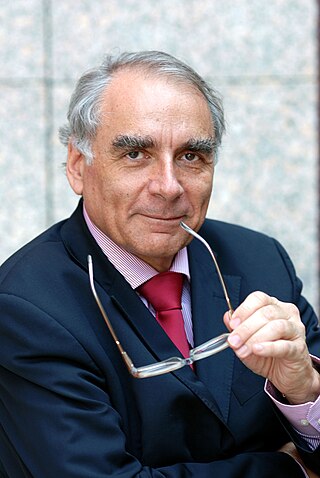
Tibor Frank was a Hungarian historian who was professor of history at the School of English and American Studies of the Faculty of Humanities of the Eötvös Loránd University (ELTE). He was director of its School of English and American Studies. From 2013 he was corresponding member of the Hungarian Academy of Sciences (MTA), as of 2019 he was a full member.
Deepak Dhar is an Indian theoretical physicist known for his research on statistical physics and stochastic processes. In 2022, he became the first Indian to be awarded the Boltzmann Medal, the highest recognition in statistical physics awarded once every three years by IUPAP, for exceptional contributions to the subject.
Botond Roska is a Hungarian medical doctor and biomedical researcher. Much of his research is on the pathways of visual perception and how to treat diseases that cause blindness.

Tamás Pócs is a Széchenyi Prize-winning Hungarian botanist, ecologist, and college professor and member of the Hungarian Academy of Sciences. His research interests include the taxonomy and distribution conditions of mosses, tropical ecology, and the flora of southwestern Transdanubia and the Southern Carpathians. He is associated with the collection of many plant specimens and the description of one hundred and forty new plant species. Between 1991 and 1995, he was the president of the Hungarian Biological Society. His great-grandfather Ferenc Kozma (1844–1920) was a teacher, publicist, and academic; his sister Éva Pócs is a folklore researcher.
